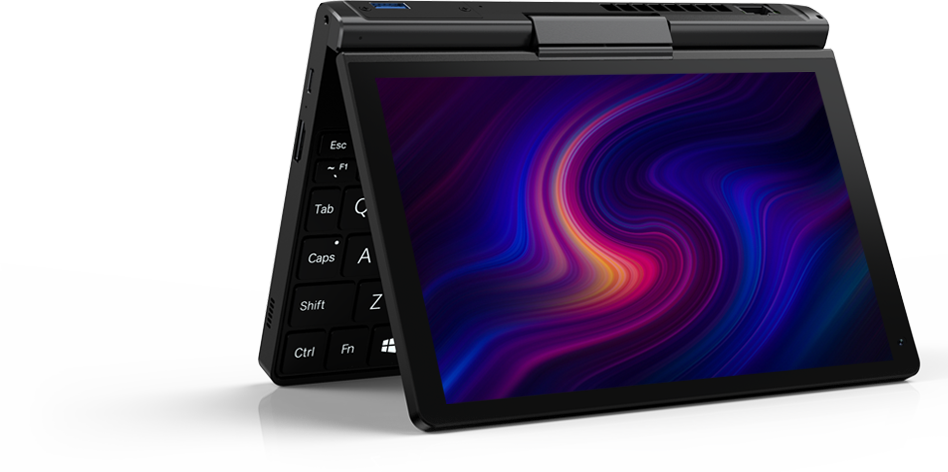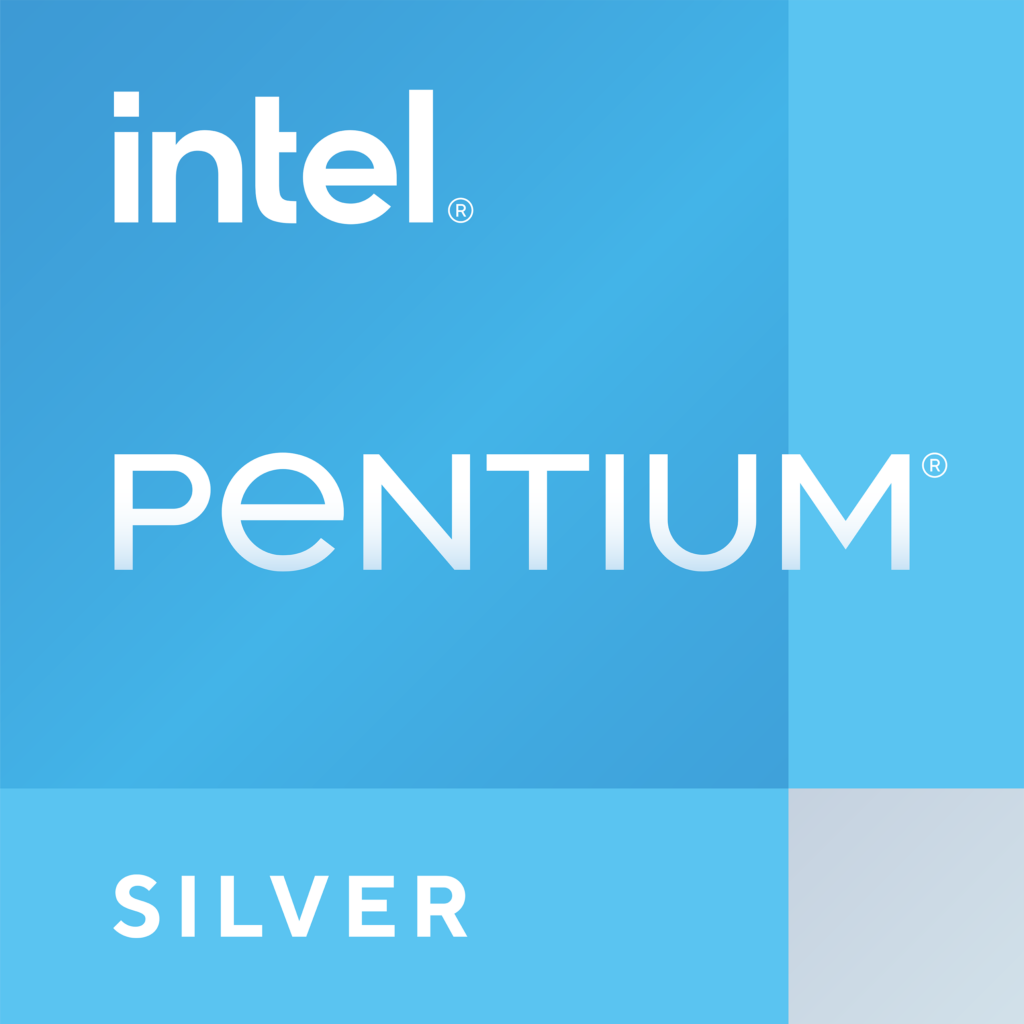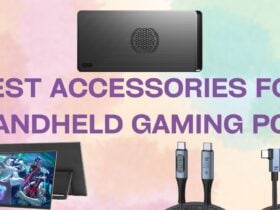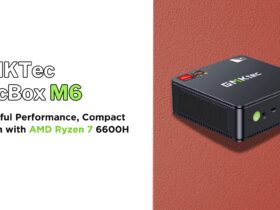GPD has refreshed their Pocket 3 mini-laptop for 2023, upgrading the entry-level model with a more powerful Intel Pentium Gold 7505 processor and 16GB of RAM. The updated Pocket 3 offers improved single-core performance and graphics capabilities compared to the previous version featuring the Pentium Silver N6000 chip.
GPD Pocket 3 2024 Specifications

liliputing.com
The GPD Pocket 3 2024 refresh brings some notable spec upgrades to the entry-level model of this versatile mini-laptop:
The 2024 model features a faster Pentium Gold 7505 processor and double the RAM compared to the previous Pentium Silver N6000 version. Thunderbolt 4 support is also added, enabling eGPU connectivity. These upgrades provide a significant performance boost while maintaining the Pocket 3’s ultra-portable form factor and versatile features like the 180° rotatable touchscreen.
Effortless 180° Swivel Screen

The GPD Pocket 3’s 180° rotatable touchscreen display is one of its most unique and versatile features, offering several advantages:
- Innovative hinge design: The Pocket 3 uses a specially engineered hinge with advanced powder metallurgy technology that allows smooth one-handed 180° rotation of the screen around the Y-axis. This enables effortless conversion between laptop and tablet modes.
- Excellent durability: GPD’s robust hinge has proven its reliability, successfully completing 100,000 continuous rotation, opening, and closing operations in lab testing with an impressive 99.3% reliability rate.
- Automatic screen rotation: Unlike some earlier prototypes, the final Pocket 3 includes a gyroscope sensor that detects the screen orientation and automatically adjusts between landscape and portrait modes as needed when in tablet form.
- High-quality display panel: The 8-inch IPS touchscreen features a sharp 1920×1200 resolution, 500 nits of brightness, and 100% sRGB color gamut for a vivid and detailed picture. Its 16:10 aspect ratio is ideal for both productivity and media consumption.
- Precision stylus support: With Microsoft Pen Protocol 2.0 compatibility and 4096 levels of pressure sensitivity, the Pocket 3’s touchscreen works seamlessly with an active stylus for fluid handwriting, sketching, and precise control. Palm rejection technology prevents accidental input.
- Versatile usage modes: The 180° hinge enables using the Pocket 3 in standard laptop mode, tablet mode for note-taking and drawing, tent mode for presentations or media, and stand mode for touch-based interaction.
By combining a productivity-focused mini laptop with a high-quality digital writing slate, the GPD Pocket 3’s unique folding touchscreen design offers unmatched flexibility for such a portable device.
Stylus Support for Precision

The GPD Pocket 3 mini-laptop offers excellent stylus support, making it a versatile tool for digital writing, sketching, and precise navigation. It is compatible with active styluses using Microsoft Pen Protocol 2.0, such as the Surface Pen and the official GPD Pocket 3 stylus.With 4096 levels of pressure sensitivity, the Pocket 3’s stylus enables natural, precise handwriting and drawing that feels like using a pen on paper. This high pressure sensitivity allows for expressive strokes with varied line thickness based on how hard you press. Palm rejection technology prevents accidental input from your hand while writing or drawing.The Pocket 3’s stylus is ideal for taking handwritten notes, annotating documents or PDFs, sketching ideas, creating artwork, and signing digital documents. It offers a comfortable and intuitive way to interact with the touchscreen, especially when the Pocket 3 is folded into tablet mode using its 180° rotatable display.For users who prefer handwriting over typing, or need to sketch diagrams and visuals, the Pocket 3’s excellent stylus support is a key feature. It enables frictionless digital ink input in a highly portable form factor, making the Pocket 3 a compelling tool for students, artists, designers, and professionals who need to write or draw on the go.
180° Rotatable Touchscreen Display

The GPD Pocket 3 features an innovative 180-degree rotatable touchscreen display that allows the mini-laptop to convert into a tablet form factor. Using advanced powder metallurgy technology, the screen can be effortlessly rotated with one hand to face away from the keyboard and folded flat against the back of the device.In tablet mode, the Pocket 3’s 8-inch 1920×1200 IPS display supports 10-point multi-touch and is compatible with an active stylus, enabling precise handwriting, sketching, and navigation. With 4096 levels of pressure sensitivity, the Pocket 3 delivers a natural pen-on-paper feel for taking notes, annotating documents, or creating digital artwork on the go.The Pocket 3’s unique swivel hinge has undergone extensive durability testing, withstanding over 100,000 continuous open/close cycles with a 99.3% reliability rate. A gyroscope sensor automatically adjusts the screen orientation based on how the device is held, switching between landscape and portrait modes.By combining a productivity-focused mini-laptop with a digital notepad and sketchbook, the GPD Pocket 3’s versatile 180-degree folding touchscreen offers a compelling solution for both work and creativity in a highly portable form factor.
KVM Functionality on Pocket 3

The GPD Pocket 3 includes a unique KVM (keyboard, video, mouse) module that allows it to control servers and other devices. This KVM functionality makes the Pocket 3 a versatile tool for IT professionals and system administrators.With the KVM module attached, the Pocket 3 can connect to servers or computers that lack a keyboard and mouse, and control them using the Pocket 3’s own input devices.1 The Pocket 3’s screen will display the video output from the connected device.1 This can be very handy for managing headless systems or accessing machines in a server room.The KVM feature works with both Windows and Linux operating systems on the Pocket 3.1 No special drivers or configuration are needed – the video signal from the connected device shows up like a webcam that can be viewed with apps like VLC or OBS, and the keyboard/mouse control is handled in hardware.In addition to servers, the KVM module also allows interfacing with industrial machines and other equipment. The RS-232 serial module can be used for applications like debugging embedded systems or controlling CNC machines.Overall, the KVM functionality adds a lot of flexibility to the already very portable and capable GPD Pocket 3. It’s a standout feature for users who need to manage IT infrastructure or interface with specialized devices while on the go.1
RS-232 for Specialized Applications

The GPD Pocket 3 offers an optional RS-232 serial port module that enables integration of a genuine RS-232 interface, making it useful for a variety of industrial and commercial applications. Some key use cases for the RS-232 port on the Pocket 3 include:
- System debugging: The RS-232 port allows connecting to embedded systems and other devices for low-level debugging and diagnostics. Many industrial controllers, scientific instruments, and networking equipment still rely on serial ports for configuration and troubleshooting.
- Interfacing with CNC machines: The RS-232 module makes the Pocket 3 well-suited for operating professional CNC milling machines and other computer numerical control equipment that use serial communication.
- Legacy device support: Many older devices like point-of-sale systems, bar code scanners, lab instruments, and automation controllers only have RS-232 ports and can be interfaced using the Pocket 3’s serial module.
- Field service and engineering: The Pocket 3 with RS-232 provides a portable solution for field technicians and engineers who need to connect to serial-based equipment for maintenance, upgrades, and repairs while on-site at remote locations.
The RS-232 module is swappable with the standard USB-A or KVM modules on the Pocket 3, allowing the device to be customized for different use cases. This modular design makes the Pocket 3 adaptable as a portable and capable tool for both IT and OT (operational technology) applications requiring serial connectivity.
Performance Boost with Pentium Gold 7505

The Intel Pentium Gold 7505 processor provides a significant performance boost to the GPD Pocket 3 2024 mini-laptop compared to the previous Pentium Silver N6000 model. Based on Intel’s Tiger Lake-U architecture, the 7505 features 2 cores and 4 threads with a base frequency of 2.0 GHz and a max turbo frequency of 3.5 GHz. It also integrates Intel’s new Xe graphics, offering substantially better graphics performance than the older UHD Graphics. While still an entry-level chip, the Pentium Gold 7505 benchmarks around 19% faster than the Microsoft SQ2 processor and only slightly behind the Core i3-1005G1, making it capable for basic computing tasks. The 7505’s 10nm SuperFin design allows for this performance in a power-efficient 15W package suitable for a compact system like the GPD Pocket.
Graphics Upgrade Over N6000

The GPD Pocket 3 2024 refresh with the Intel Pentium Gold 7505 processor offers a substantial graphics performance boost compared to the previous model with the Pentium Silver N6000. The 7505 features Intel UHD Graphics based on the newer Xe architecture, which brings significant improvements over the older UHD Graphics in the N6000.
According to Notebookcheck, the average Pentium Gold 7505 scores around 550 points in the 3DMark Time Spy graphics benchmark, while the average Pentium Silver N6000 only manages about 190 points.This means the 7505’s Xe-based UHD Graphics deliver nearly 3 times the performance of the N6000’s UHD Graphics.The Pentium Gold 7505’s UHD Graphics include 48 execution units (EUs) running at up to 1.25 GHz, doubling the 24 EUs of the Pentium Silver N6000. More crucially, the 7505 benefits from the many architectural enhancements of Intel’s Xe graphics, such as improved performance-per-watt, integer scaling, variable rate shading, and better encoding/decoding.4Notebookcheck’s data shows the Pentium Gold 7505’s graphics performance is similar to the Intel UHD Graphics G1 found in some Core i3 Ice Lake processors like the i3-1005G1. While still not a gaming powerhouse, this allows the GPD Pocket 3 2024 to handle light 3D gaming and GPU-accelerated tasks far better than the previous N6000 model.4Combined with the Thunderbolt 4 port for eGPU support, the Pocket 3 2024’s upgraded Xe graphics make it a much more capable mini-laptop for applications that benefit from faster GPU performance compared to its predecessor.
Intel Xe Graphics Boost
The GPD Pocket 3 2024 refresh brings significantly enhanced graphics capabilities compared to the previous Pentium Silver N6000 model, thanks to the upgraded Intel Pentium Gold 7505 processor with Intel UHD Graphics based on the newer Xe architecture.The Pentium Gold 7505 integrates Intel UHD Graphics with 48 execution units (EUs) running at 350 MHz base and 1.25 GHz max frequency. This is double the 24 EUs found in the Pentium Silver N6000’s UHD Graphics.

More importantly, the 7505’s graphics are based on Intel’s latest Xe architecture which brings major performance-per-watt improvements and new capabilities like integer scaling, variable rate shading, and improved encoding/decoding.In benchmarks, the Pentium Gold 7505’s Xe-based UHD Graphics score around 550 points in 3DMark Time Spy, nearly triple the 190 points of the Pentium Silver N6000’s older UHD Graphics. This allows the Pocket 3 2024 to handle light 3D gaming and run GPU-accelerated applications much more smoothly.While still not as powerful as the Iris Xe graphics in the Core i7-1195G7 model, the Pocket 3 2024’s Xe-based UHD Graphics provide a very noticeable step up in graphics capabilities from the previous entry-level model. Combined with the Thunderbolt 4 port for connecting an external GPU, the Pocket 3 2024 has a lot more flexibility for tasks that benefit from faster graphics performance.
Thunderbolt 4 and External Graphics Dock Support

The GPD Pocket 3 2024 mini-laptop adds Thunderbolt 4 support, enabling compatibility with external graphics docks like the GPD G1 eGPU enclosure. Thunderbolt 4 offers a 40Gbps connection, with 32Gbps available for PCIe data, allowing high-bandwidth devices like external GPUs. The Pocket 3 can connect to the G1 dock to significantly boost its graphics performance when needed for gaming or content creation. Thunderbolt 4 also supports dual 4K displays or a single 8K display, and is backwards compatible with Thunderbolt 3, USB4, and USB 3.x devices and cables.
Battery Life Improvements

The GPD Pocket 3 2024 refresh maintains the impressive battery life of its predecessor. It features a built-in 10,000mAh (38.5Wh) high-capacity battery that allows for approximately 8.5 hours of local 1080p video playback at 8Mbps in H.264 format, based on GPD’s real-world testing. While gaming or resource-intensive tasks like video editing will likely result in 4-5 hours of runtime, the Pocket 3 still provides ample battery life for a highly portable mini-laptop. The power-efficient Intel Pentium Gold 7505 processor helps to maximize battery life in this compact form factor.1
Pocket 3 Performance Comparison

Here is a comparison of the performance between the GPD Pocket 3 2024 with Pentium Gold 7505, the GPD Pocket 3 N6000, and the GPD Pocket 3 1195G7:
The GPD Pocket 3 2024 with the Pentium Gold 7505 offers a significant performance boost over the previous N6000 model. Its PassMark CPU Mark score of 3,731 is nearly double the 1,903 of the N6000. Single and multi-core Geekbench 5 scores also show the 7505 outperforming the N6000 by 85% and 81% respectively.However, the Pocket 3 1195G7 with its Core i7 processor still delivers the highest performance. It scores 59% higher than the 7505 in PassMark and 45% higher in Geekbench 5 single-core.2 The 1195G7’s Iris Xe graphics are also significantly more powerful, with a 3DMark Time Spy Graphics score over double the 7505’s UHD Graphics.2So in summary, the GPD Pocket 3 2024 provides a nice performance upgrade from the base N6000 model at a lower price than the premium 1195G7 version. It hits a sweet spot balancing performance, battery life and cost.
Buy Your GPD Pocket 3 from DROIX

The GPD Pocket 3 2024 refresh is a compelling update to an already impressive mini-laptop. With the more powerful Intel Pentium Gold 7505 processor, 16GB RAM, and Thunderbolt 4 support, it offers a significant performance boost over the previous entry-level model at an attractive price point.The Pocket 3’s versatile features like the 180° rotatable touchscreen, active stylus support, and modular ports make it an excellent productivity and creativity tool for mobile professionals, IT technicians, engineers, students, and artists alike.5If you’re in the market for an ultra-portable Windows laptop with unique capabilities, you can purchase the GPD Pocket 3 from DroiX, an authorized reseller based in London, UK. DroiX offers the full range of Pocket 3 models and accessories, including the 2024 refresh, high-end 1195G7 version, styluses, and expansion modules. With fast worldwide shipping, local warranty support, and excellent customer service, DroiX is a trusted source for GPD products.









